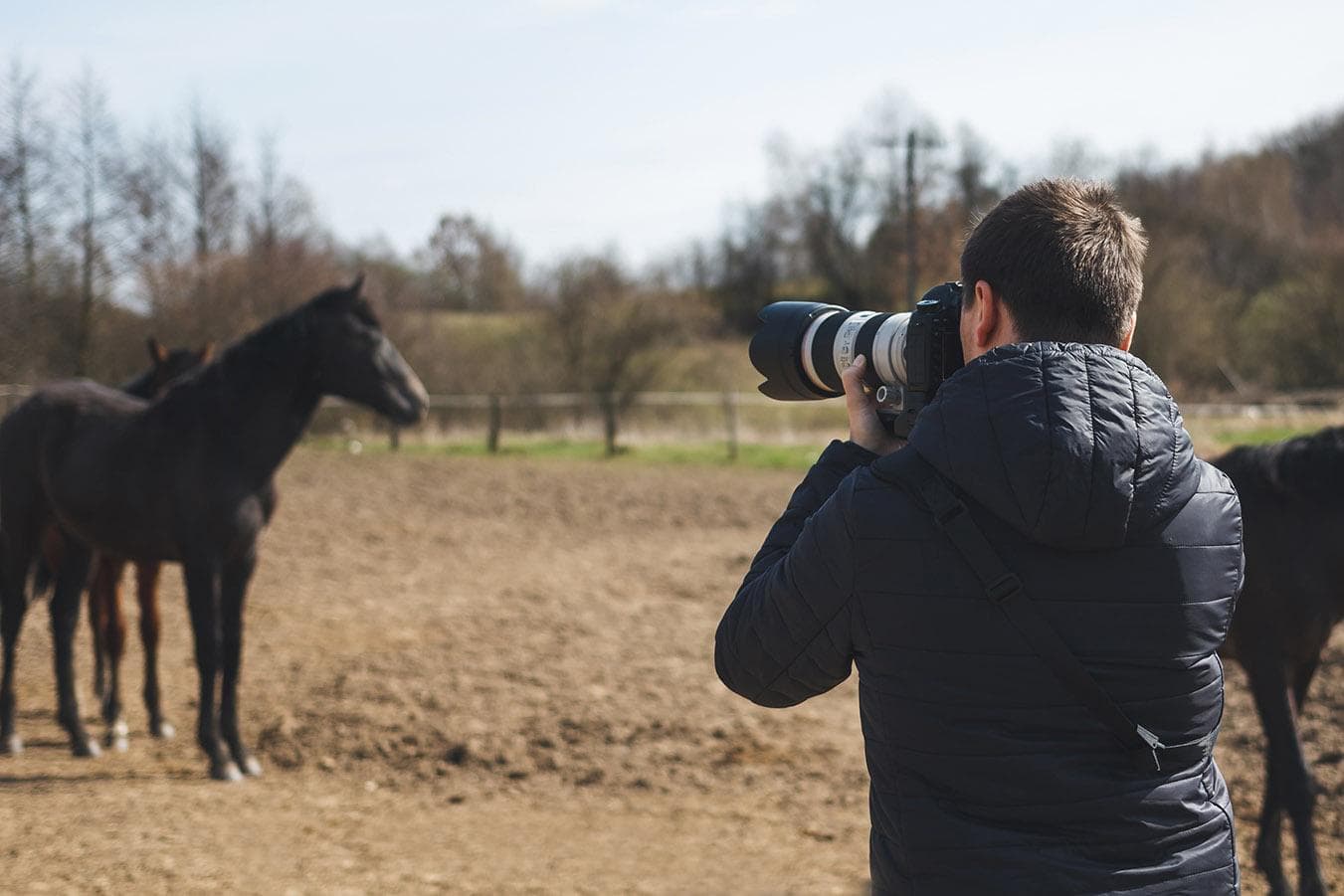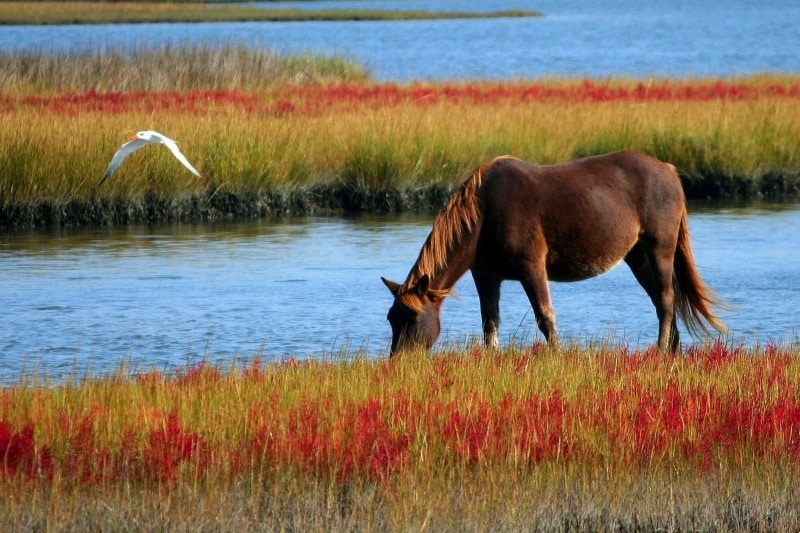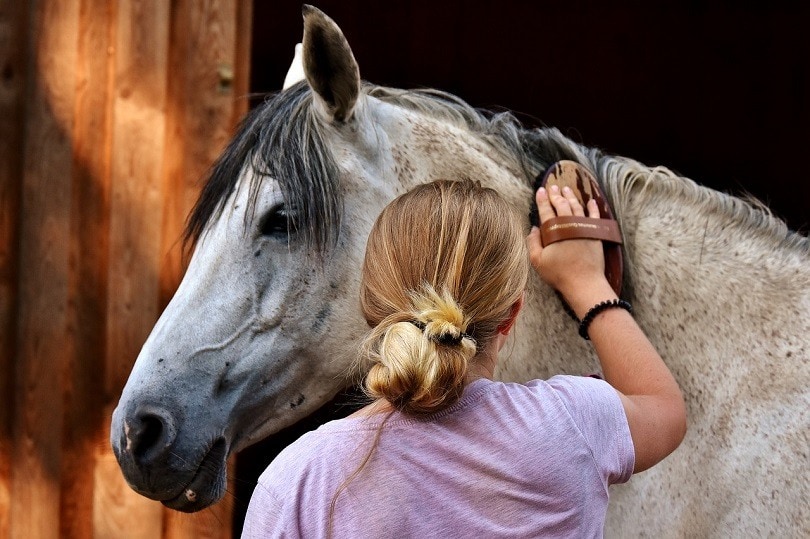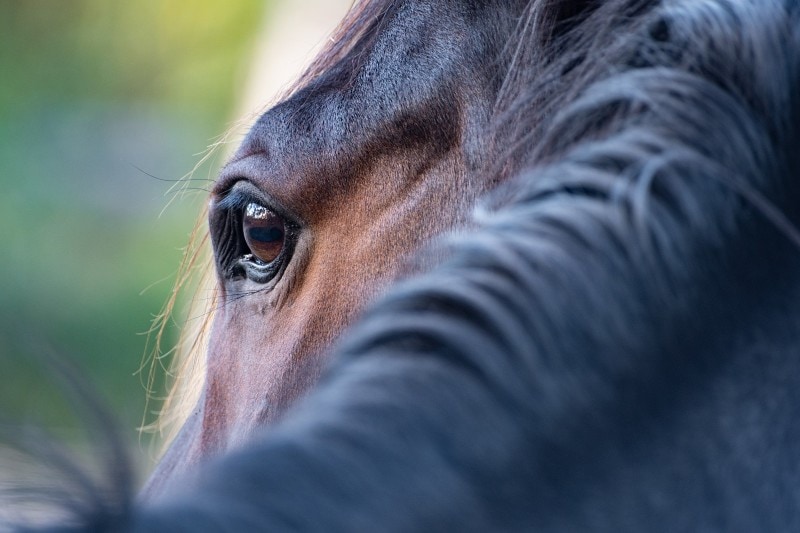
Horses are some of the most majestic and beautiful animals on the planet. Being tasked to photograph these incredible creatures is a wonderful opportunity for any photographer. Not only will horses provide you with some excellent photos for your portfolio, but they are highly intelligent, unique, and fun to work with.
Like with any form of photography though, there are plenty of pointers to keep in mind as you prepare for your shoot. Capturing this kind of beauty is very rewarding, so you want to get it right. Keep reading to learn some of the best tips for your upcoming photoshoot with your equine subjects.
The 15 Horse Photography Tips for the Perfect Pet Portrait
1. Brush Up on the Psychology of Horses
Before you start photographing horses, you should be aware of the psychology of these large, powerful animals. As a photographer, you want to establish a connection with any of your subjects, including the four-legged kind.
If it’s not your horses in front of the lens, your presence could affect their mood. Study up on the horse’s behaviors so that you understand them better and can make the most out of this experience.
Horses are well known for picking up on the emotions of those around them, so you want to feel calm, confident, and completely comfortable with them before you get started.

2. Get to Know the Horse and Handler
One of the most important aspects of photography is getting to know your subject. Ask the handler what they are looking for in this photoshoot and discuss ways you can best obtain the goal. You will want to capture the unique personality of both the horse and the rider, so it’s a good idea to get up close and personal if you can.
If you are taking part in event photography, study the event you will be photographing so that you can get to know the ins and outs and what you should work on capturing. It’s also a good idea to know what horse breed you are working with so you can understand their unique characteristics and how to best complement them in your photos.
3. Have Safety Measures in Place
Safety is key in any photoshoot, especially those that involve animals. Horses are very large and certain ones may be more reactive to certain stimuli than others. Be mindful of your mannerisms and be careful not to make any sudden, drastic movements that could spook the horse.
Keep yourself at a safe distance if at all possible. Always approach horses from the front and head toward their shoulder with your hand extended. Speak to them often in a calm, nice tone especially if you need to approach them.
Never approach a horse from the rear. Keep the lines of communication open with the handler so they can give you any additional safety tips when working with their horse. Try your best to prevent any distractions like other people, animals, or anything that would make loud noises.
4. Pick Your Background Carefully
Every photographer understands the importance of the right background. When you are planning a photo shoot with a horse, make sure to pick out the best outdoor location possible. Now, this may not apply when you are doing event photography, but even then you can pick prime locations to get the best shot.
The best location will have a lot of space and a beautiful view. Consider pastures, fields, forests, quiet backroads, or in or around the stalls. You will want an area that is quiet and will help the horse feel comfortable while also allowing for enough room to keep a safe distance.
Keep in mind that you don’t want your background to be too close in color to the horse or the style worn by the horse and rider. You may have to get creative since background choices may be limited.

5. Choose the Correct Equipment and Accessories
You are going to need the correct photography equipment to complement the shoot. You will need to put a lot of focus on proper positioning and the overall aesthetic of your horse. Standard lenses are often used in horse photography. You certainly want to avoid any distortion lenses and rule out artistic lenses and wide angles.
A standard lens will have wide-open apertures that will make them great for low light conditions and the shallow depths of the background. You should also have telephoto lenses ready so you can keep your distance and also be ready for any action photography.
Don’t forget to pack a filter for your lens. If you are shooting near the stables, you can expect a lot of dirt and dust to get kicked up. Make sure you have a lens cloth and any other cleaning supplies at your disposal.
6. Be Cautious When Using Flash
Natural lighting is going to be your best friend when it comes to horse photography. It’s not recommended to use flash near horses because this could spook them and turn their mood around very quickly. Try scheduling these shoots during the early morning hours if possible.
Keep in mind that some horses may be accustomed to camera flashes, especially if they are show horses or participate in sporting events. If you must use flash, speak to the horse’s handler about how to best handle the situation. You may have to take some time to get them comfortable with the flash before the real photography can start.
7. Make Sure the Horse Is Well Groomed
Horses have a knack for getting dirty. After all, they spend most of their days grazing in a pasture, socializing with other horses, and rolling around in the dirt. Their living conditions require frequent grooming anyway, so you want to set aside time for a thorough grooming (or even a full bath) before you start taking pictures.
You will want to have all your necessary grooming supplies handy. Brush the entire body, including the mane and tail to keep them looking nice and tangle-free for your shots. Remember to check the face for any dirt or debris, as you’ll likely want to get some up close detailed photos, too. Give them a nice sponge bath afterward and do any needed mane or tail styling once they are dry.

8. Learn to Direct the Horse
You are going to need to provide some direction during the shoot. These animals are large, so there are going to be certain limitations placed on you during the shoot. As mentioned above, you need to get to know the horse and make sure they are comfortable with your presence. That way you can help direct them more easily.
If you have a horse that is a bit more reserved around you, communicate with the horse’s handler about how to best direct the horse when you are needing to set up an ideal shot.
9. Capture Images of the Ears Up
One of the most important aspects of animal photography is capturing them with their ears straight up. This doesn’t just go for horses, but for most animals that you will put in front of your lens.
When the horse’s ears are erect and facing forward, it means they are alert and focused. This look best compliments the animals and truly captures their beauty and confidence.
There are plenty of things you can do to get those ears up, like making clicking noises, showing them treats, or even rustling around a little. You don’t want to spook the horse while you are trying to get its attention, so make sure you understand its limits first.
10. Keep Style in Mind for the Shoot
Just like you would do for any photo shoot, you want the style to match up. It doesn’t have to be perfect, but if you are photographing a horse and its rider, ask the rider to wear colors that will compliment any of the tack being worn by the horse.
Ultimately, you want everyone to be satisfied with the photos and since preferences are unique to the individual, this is something to discuss long before the shoot is to take place.

11. Take Both Portraits and Action Shots
When you are prepping for your photo shoot, consider doing a combination of portraits and action shots to truly capture the essence of the horse. Horse shows and competitions may be the ideal place for action shots, and you can also capture them in motion while they are being ridden.
You can truly capture the grace and power of these animals by keeping your mind open and working toward shots that organically capture their swift movements. Action shots allow the rider to hold onto a memory of what they love doing the most.
When taking portrait shots, try to position the horse in a way that truly catches the horse’s elegance. Portraits are meant to be more intimate and meaningful.
12. Use Burst Mode and Continuous Focus
Not only do you need to have all the right equipment ready, but you need to use it correctly for the best results. Certain settings like burst mode and continuous focus are going to be something you will turn to during animal photography. Keep in mind that continuous focus has different names depending on your brand of camera.
This is going to be the best way to capture the horse in action. Not just that, but horses are going to blink, move around, and turn their heads whenever they please so the best way to get that perfect shot is by having the burst mode on.
Settings are one thing, but the technique is another. Keep yourself at eye level to keep your shots looking as proportionate as possible and try panning when you are capturing action shots. Keep your shutter speed adjusted so that you can capture freezes of the mane and tail as they flow in the wind.
13. Don’t Forget to Capture the Detail
Your primary focus is going to be a combination of full-body portraits and action shots but you should also be considering capturing some detail. Zoom up close on the horse’s face capturing the look in its eyes or other intimate details of its face.
These small details tend to go unnoticed in everyday life, so it’s nice to capture them during a photo shoot to remind the client that there’s beauty found in the minuscule details as well.

14. Capture Organic Moments Between the Horse and the Handler
The bond between a horse and its handler is often a beautiful thing to witness. Horses form very close connections to their people and vice versa. This is something that will be worth capturing so the handler can cherish it forever.
Keep your distance and capture those moments in between more posed shots where the rider is soothing the horse, speaking to them, loving on them, or just organically interacting with them. Any animal lover can appreciate how meaningful these types of photos are.
Conclusion
Getting to participate in horse photography is a unique and wonderful experience. Whether you are a beginner or are just trying to kick your skills up a notch, there are plenty of tips you can follow so you are well-prepared and can get the best results possible.
- Related Read: 13 Rabbit Photography Tips for Perfect Pet Portraits
Featured Image Credit: Konstantin Tronin, Shutterstock








